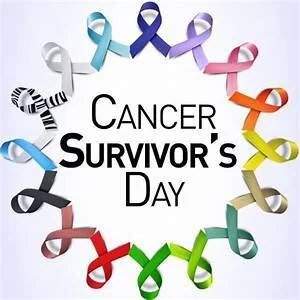Good news - cancer mortality rates continue to decrease, and cancer survivors are living longer than ever before. That said, we have much more work to do. It is estimated that there will be ~1.9 million new cancer cases diagnosed in 2022.
I would like to give a special shout-out to all of the cancer survivors out there! Well deserved, you have a day designated to Cancer Survivorship – June 5, 2022. The NCSD Foundation states that, “National Cancer Survivors Day is a celebration for those who have survived, an inspiration for those recently diagnosed, a gathering of support for families, and an outreach to the community.”
You may ask who is considered a cancer survivor? An individual is considered a cancer survivor from the time of diagnosis, through the balance of his or her life. Survivors include those living with cancer and those free of cancer. Justifiably so, there has been an increasing focus on cancer survivors’ health and well-being.
Like numbers? The number of cancer survivors has grown dramatically over the past several decades. It is currently estimated that there are just shy of 17 million cancer survivors in the United States. This represents approximately 5.0% of the population. Worldwide, there are more than 43 million cancer survivors. With a favorable trend towards survivorship, these numbers are expected to grow in the upcoming years. It has been estimated that by 2030, there will be 22.2 million cancer survivors in the US. According to the American Cancer Society, in 2019, 67% of survivors (10.3 million) have survived 5 years or more after diagnosis; 45% have survived 10 years or more; and 18% have survived 20 years or more. While survivors are of various ages, 64% of survivors are currently age 65 or older. This number is expected to grow to 73% by 2040. Additionally, the most common cancer sites represented for cancer survivors include female breast (23%, 3.9 million), prostate (22%, 3.7 million), colorectal (9%, 1.5 million), melanoma (8%, 1.4 million), and gynecologic (8%, 1.3 million).
And while these statistics are encouraging, there can be various challenges beyond completing cancer treatment. Cancer survivorship encompasses everything in life that changes as a result of the diagnosis and its aftermath. This period of time can be overwhelming and isolating – struggling to make sense of these changes. Survivors may experience a variety of medical, physical, and psychosocial consequences that affect overall health and wellbeing. These hardships may persist for years following diagnosis and treatment. Some of these concerns may include cardiovascular toxicity, hormonal challenges, chronic pain, fatigue, cognitive fog, sleep disturbance, sexual dysfunction, depression, anxiety, and more.
Fortunately, eating healthfully and following physical activity guidelines has been associated with positive outcomes, including a decrease in the risk of cancer recurrence and improvement of quality of life. Furthermore, engaging in physical activity after cancer may reduce mortality.
If you're interested in resources, check out American Cancer Society Life After Treatment Guide.
Don’t lose hope. Acknowledge all that you have endured and accomplished. You are strong. Empower yourself. Utilize resources and ask for help. Please know that as healthcare practitioners we are working to learn more how to best support you and are here for you. Enjoy National Cancer Survivor’s Day – you certainly deserve it!

